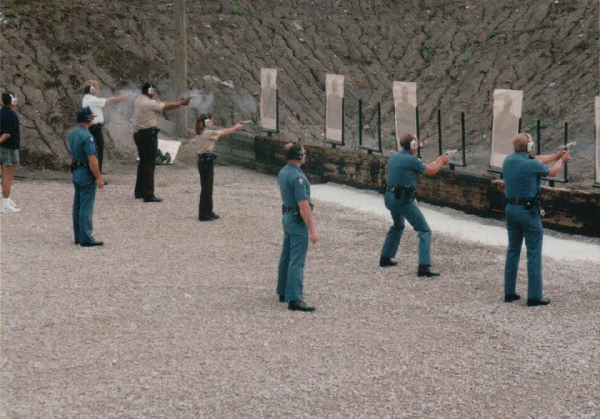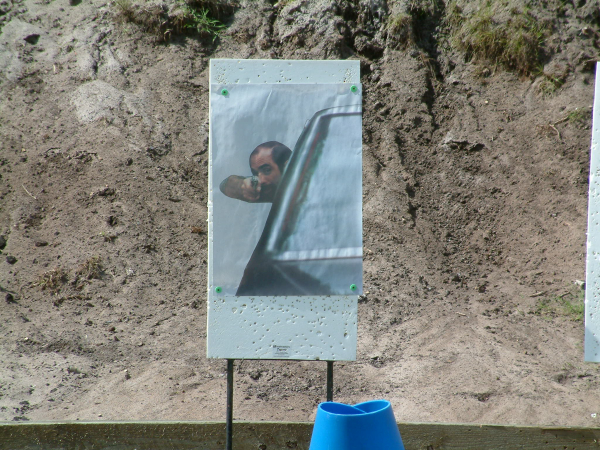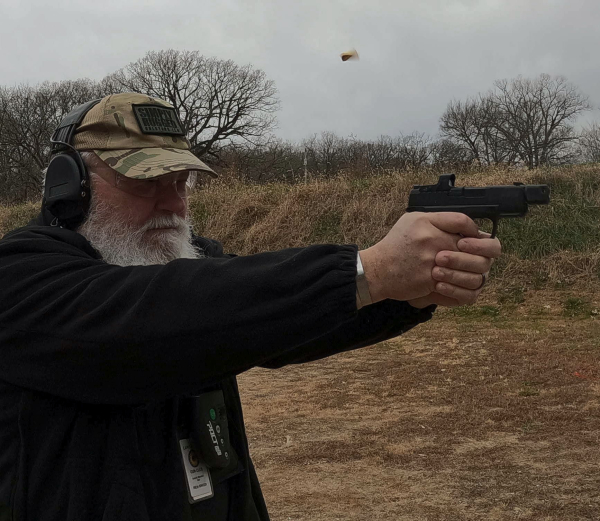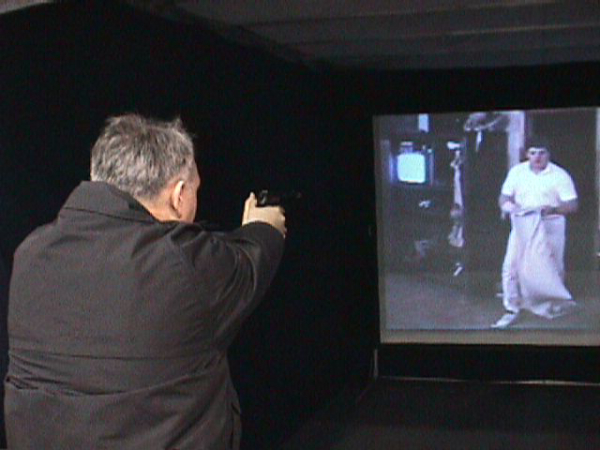There’s no “be-all, end-all” training, it’s that simple. And trying to get a short cut way to excellence in personal defense is just a quick way to get fitted for a marble hat.

Better to recall the “crawl-walk-run” methodology – while moving from “doctrine” to “objectives based” training. It feeds both of those styles. I see video simulators as useful for agencies in a couple of ways; one is using the 'range' function to warm-up, tune-up, and get out of the comfort zone of range drills officers often shoot. The other is using the decision-making model, learning to ‘read’ potential threats.
Many years ago, we used an (even-then) elderly FATS at the local Air Guard base for a group of new hires. Each student got a freebie - a range course where they could see and experience the video set-up and learn how the M9 pistol worked. Then we'd take them individually, running a video camera as each faced a scenario. Whether it was a shoot situation or not, each had a different event and each had to craft a report of their incident. The tapes were labeled and boxed as we took them for review by detectives. A few days later, a detective showed up at the range to do some interviews of the trainees based on the written report and the 'surveillance video.’ That worked quite well.


After we moved into the law enforcement center, the city got a video simulator room. They trained me on its operation and I wrote some marksmanship drills for it. It seemed to me to be ideal; run individuals from rollcall into the simulator for a shooting course one-by-one. That would get us to daily gun handling including shooting exercise.
Sadly, it was never – as far as I know – ever used for that purpose.
Why video? Scenario-based training, a critical component, is rare because it’s expensive, time consuming, risky and (too-often) poorly done. With video, you can have one manager (to document and record the training while running the technology), and a place to stow weapons while the officer is in the environment. You can begin with a gun-handling and marksmanship warm-up, then either run a scenario or targeted segments (threat assessment: “is he reaching for a gun or his keys?”). Afterwards, cool them down with a precision shooting drill.

It can take as little as fifteen minutes. For a bonus, you get the trainee to react to a visual cue – not a timer beep, a whistle or verbal command.
I saw a video about reacting to a sound stimulus on the range versus reacting to a visual stimulus, “STOP training to react to sounds!” from the “Gun Brotha” on Youtube. On our old range, adding the turning target system made a huge difference. Even with that, maintenance issues intruded or the “it’s too much trouble” syndrome led to using verbal stimulus, timers, etc.
Adding video simulators as well as working indoor/outdoor simulators is helpful in driving the visual cue – which is what we’re supposed to be training for in the first place. With the auditory, we’re training the wrong neural pathway – we’re taught to never shoot at a sound; only the visual stimulus is appropriate to trigger the shot. But we’re trained to shoot on an auditory signal.

Eric Maudsley, former traveling instructor for MILO Ranges, engaged in some discussion on social media about video simulator use. He noted that the body language recognition aspect of video simulators “can be repeated over and over to create myelinated “programs …” (and) newer systems video the student as well as link up the video. You can show the student in real time what they were doing AND the corresponding video from the scenario, including their shots (with whatever tool they were using). “
He goes on, “The most important feature is the ability to debrief, and then have the student do EXACTLY the same scenario, successfully. It’s the confidence and success that hard wire that solution for the problem presented where the real magic happens, in my opinion. - Best practice is max of about an hour, with a warm-up game/fundamentals practice, 2-3 scenarios max., and then another game to close out (a “sweetener” so the last thing the trainee does is fun and they want to do more).”
He noted the “similarities between police officers training for deadly force situations, and airline pilots training for in-flight emergencies.”
These are ‘low frequency/high stakes” scenarios. The users require “automaticity in their procedures so they can select the right response and carry it out.”
There is critical need for this training as the skills are critical needs skills that are “(u)nsafe to practice in a real environment but can be replicated in a simulated environment.”
For pilots, they’re required to train skills in a “closed-skill environment,” to then train and test application in an open skills environment.
“Per FAA regulation, pilots get 16 hours in a simulator every six months. In addition to training, their skills are tested/validated and if they fail, they don’t fly.” He said one airline pilot remarked “My job is literally on the line every six months.”
Is the application of force, particularly deadly force any less critical? If I had it in my power, regional video simulators would be available for free use by members of all state and local agencies, with documentation of skills training and assessment. As, as they use guns less often than commercial pilots take off and land, I’d emphasize safe gun-handling in addition to threat recognition.
It’s what citizens pay for and it’s what should be delivered.
— Rich Grassi